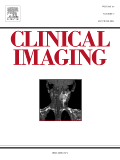
Clinical Imaging
Scope & Guideline
Empowering Insights in Nuclear Medicine and Imaging
Introduction
Aims and Scopes
- Innovative Imaging Techniques:
The journal regularly publishes studies on the development and evaluation of novel imaging modalities and techniques, including advancements in MRI, CT, ultrasound, and radiomics. - Artificial Intelligence in Radiology:
A significant focus is placed on the incorporation of artificial intelligence and machine learning in imaging, including automated detection, diagnostic support systems, and workflow optimization. - Clinical Applications and Outcomes:
Research often highlights the practical applications of imaging in various clinical scenarios, assessing how imaging influences diagnosis, treatment planning, and patient management. - Multimodality Imaging:
The journal covers studies that utilize a combination of imaging modalities to improve diagnostic capabilities in complex cases, particularly in oncology and cardiovascular disease. - Patient-Centered Research:
Submissions often address the patient experience, including studies on patient safety, satisfaction, and the impact of imaging on treatment outcomes.
Trending and Emerging
- COVID-19 Related Imaging:
Research focusing on the imaging characteristics, complications, and management of COVID-19 patients has surged, reflecting the pandemic's impact on radiology. - Radiomics and Quantitative Imaging:
There is a growing trend in studies utilizing radiomics, where quantitative analysis of imaging data is used to predict outcomes, enhance diagnosis, and tailor treatment plans. - Diversity and Inclusion in Radiology:
Emerging themes emphasize the importance of diversity and inclusion within the field, addressing disparities in healthcare access, representation in research, and the impact of social determinants on imaging practices. - Integration of AI and Machine Learning:
The implementation of AI and machine learning technologies in imaging for diagnostics and workflow efficiency is a rapidly growing area of research, reflecting the technological advancements in healthcare. - Patient-Centered Imaging Approaches:
Research increasingly focuses on how imaging impacts patient care, including studies on patient safety, satisfaction, and the role of radiologists in multidisciplinary teams.
Declining or Waning
- Traditional Imaging Techniques:
There has been a noticeable decrease in publications focusing solely on conventional radiographic techniques, as the field moves towards more advanced imaging modalities and technologies. - Basic Imaging Physics:
Topics centered on fundamental imaging physics principles are appearing less frequently, likely overshadowed by research emphasizing clinical applications and technological advancements. - Non-Clinical Research:
Research that does not directly relate to clinical outcomes, such as purely theoretical studies or those focused on the technical aspects of imaging without implications for practice, is becoming less common.
Similar Journals

Radiology-Imaging Cancer
Exploring New Frontiers in Cancer Imaging Techniques.Radiology-Imaging Cancer is a prestigious journal published by the Radiological Society of North America (RSNA), focusing on the critical intersection of radiology, oncology, and advanced imaging techniques. This journal stands out in its field with a commendable ranking in the Q2 category for Medicine (miscellaneous) and Oncology, and an impressive Q1 ranking in Radiology, Nuclear Medicine and Imaging, according to the 2023 quartiles. With an ISSN of 2638-616X, it serves as an essential platform for the dissemination of research that contributes to the understanding and improvement of cancer diagnosis and treatment. Its comprehensive scope encompasses a range of topics, from innovative imaging modalities to clinical applications in oncology, making it a valuable resource for researchers, clinicians, and students interested in the evolving field of cancer imaging. Despite being published in the United States, the journal aims for a global reach, catering to a wide audience dedicated to advancing medical science.
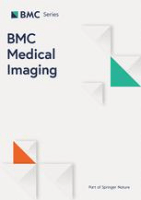
BMC MEDICAL IMAGING
Empowering Researchers and Clinicians in Medical Imaging.BMC Medical Imaging is a premier open-access journal dedicated to advancing the field of radiology, nuclear medicine, and imaging technologies. Published by BMC in the United Kingdom, this journal serves as a vital resource for researchers, clinicians, and students, fostering a collaborative environment for sharing innovative findings and methodologies in medical imaging. With a commendable impact factor and an impressive Scopus ranking within the top 35% of its category, BMC Medical Imaging provides a platform for high-quality research to be disseminated widely and freely since its inception in 2001. The journal aims to cover a diverse array of topics, from advanced imaging techniques to their clinical applications, enhancing the understanding and effectiveness of diagnostic practices. By contributing to the body of knowledge and facilitating open access to research, BMC Medical Imaging plays a pivotal role in shaping the future of medical imaging and improving patient care.
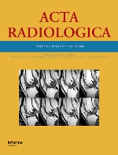
ACTA RADIOLOGICA
Exploring the Frontiers of Radiological ScienceACTA RADIOLOGICA, published by SAGE Publications Ltd, is a premier journal dedicated to the evolving field of radiology, bridging the gap between clinical practice and research from its inception in 1921 to its anticipated continuation until 2024. With an ISSN of 0284-1851 and an E-ISSN of 1600-0455, this esteemed journal holds a significant position in the academic landscape, reflected in its 2023 rankings as Q3 in several categories, including Medicine (miscellaneous), Radiological and Ultrasound Technology, and Radiology, Nuclear Medicine and Imaging. Although currently not an open-access journal, ACTA RADIOLOGICA offers robust subscription options allowing a wide readership among researchers, healthcare professionals, and students striving to stay at the forefront of radiological advancements. The journal publishes original research, reviews, and clinical studies that contribute to the understanding and application of imaging technologies, underscoring its vital role in shaping modern medical practices.

Current Radiology Reports
Connecting researchers with transformative radiological discoveries.Current Radiology Reports is an esteemed journal published by SPRINGERNATURE, focusing on the dynamic field of radiology, nuclear medicine, and imaging. With a commitment to advancing knowledge and promoting innovative practices, this journal serves as a valuable resource for researchers, healthcare professionals, and students striving to stay at the forefront of radiological advancements. Featuring an impressive impact factor and recognized as a Q3 journal within its category as of 2023, it highlights critical developments and comprehensive reviews that inform clinical practice and research methodologies. Although it operates under a subscription model, the journal provides a rich repository of peer-reviewed content, covering a wide range of topics from diagnostic imaging to therapeutic applications. With a publication span from 2013 to 2024, Current Radiology Reports continues to uphold its reputation as a leading publication critical for anyone involved in the radiology profession.

Insights into Imaging
Advancing the Frontiers of Medical ImagingInsights into Imaging is a prominent open-access journal published by SPRINGER WIEN, specializing in the dynamic fields of radiology, nuclear medicine, and imaging, with its ISSN 1869-4101. Established in 2012, the journal has established itself as a leading platform for disseminating high-quality research and innovative findings, currently holding a prestigious Q1 ranking in its category as of 2023. With an impressive Scopus rank of #42 out of 333 in the medicine discipline, the journal is positioned in the 87th percentile, reflecting its significance and influence in the academic community. Based in Germany, Insights into Imaging not only provides unrestricted access to research but also aims to bridge the gap between scientific inquiry and clinical application, making it an essential resource for researchers, professionals, and students engaged in advancing imaging technologies and practices. The journal’s commitment to fostering knowledge exchange ensures that it remains a critical contributor to the evolving landscape of medical imaging, with articles available from 2012 through 2024.

Radiologie
Innovating Diagnostic Accuracy Through Cutting-Edge ImagingRadiologie, published by SPRINGER HEIDELBERG, is an emerging journal dedicated to the fields of radiology, nuclear medicine, and imaging. With an ISSN of 2731-7048 and E-ISSN 2731-7056, this journal does not currently offer open access, providing a traditional yet respected platform for scholarly communication. Founded in 2022, it aims to advance the understanding of cutting-edge imaging techniques and their applications in clinical practice, contributing to improvements in diagnostic accuracy and patient care. Despite its recent establishment, Radiologie is positioned within the Q4 quartile category, reflecting its developing presence in the academic landscape, with a current Scopus rank of #231 out of 333 in its category. The journal serves as a vital resource for researchers, professionals, and students seeking to stay abreast of the latest developments in radiological science, imaging technology, and their clinical implications, ensuring ongoing engagement and advancement in this critical area of healthcare.

European Journal of Radiology Open
Empowering Radiology Research for a Global AudienceThe European Journal of Radiology Open, published by Elsevier, has established itself as a pivotal platform for disseminating high-quality research in the field of radiology, nuclear medicine, and imaging since its inception in 2014. This open access journal, holding a commendable Q2 ranking in the esteemed 2023 Scopus categorization, seeks to foster a collaborative environment where researchers, professionals, and students can share innovative findings and advancements. Operating under the E-ISSN 2352-0477, this journal contributes to the broader scientific discourse with a commitment to accessibility and transparency, ensuring that cutting-edge research is available to a global audience. The journal's dual focus on rigorous peer review and rapid publication processes underscores its importance within the academic community, aiming to empower professionals with the latest insights in the dynamic landscape of medical imaging.
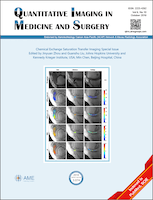
Quantitative Imaging in Medicine and Surgery
Empowering Clinicians with Advanced Imaging KnowledgeQuantitative Imaging in Medicine and Surgery is an esteemed journal dedicated to advancing the field of medical imaging through rigorous research and innovative methodologies. Published by AME PUBLISHING COMPANY in China, this journal has established itself with an impressive Q2 quartile ranking in the field of Radiology, Nuclear Medicine, and Imaging, reflecting its dedication to high-quality research. With a comprehensive focus on quantitative imaging techniques, the journal covers a wide range of topics including image analysis, imaging biomarkers, and the integration of imaging in clinical practice, promoting collaboration between imaging specialists and clinicians. As an open access journal, Quantitative Imaging in Medicine and Surgery ensures that its articles are freely accessible, facilitating the dissemination of knowledge to a broader audience. With a commitment to fostering innovation in imaging science, this journal serves as an invaluable resource for researchers, professionals, and students alike, ultimately aiming to improve patient outcomes through advanced imaging strategies and technologies.

EUROPEAN RADIOLOGY
Illuminating the Path to Radiological AdvancementEUROPEAN RADIOLOGY, published by SPRINGER, stands as a prestigious international journal in the field of radiology, nuclear medicine, and imaging, with an impressive impact factor that underscores its significance among peers. With an ISSN of 0938-7994 and an E-ISSN of 1432-1084, this journal provides a platform for cutting-edge research and advancements in medical imaging from 1991 to 2024. Recognized as a Q1 journal in both general Medicine and the specialized Radiology category by 2023, EUROPEAN RADIOLOGY ranks an impressive #17 out of 333 in its field according to Scopus, placing it in the 95th percentile. While it does not currently offer Open Access options, the journal remains essential reading for researchers, professionals, and students striving to stay at the forefront of developments in diagnostic imaging and related technologies. By contributing to a comprehensive understanding of radiological practices, EUROPEAN RADIOLOGY plays a crucial role in shaping the future of medical diagnosis and patient care.
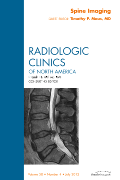
RADIOLOGIC CLINICS OF NORTH AMERICA
Elevating Standards in Radiologic Practice and Education.Radiologic Clinics of North America, published by W B Saunders Co-Elsevier Inc, stands as a pivotal resource in the field of medical imaging and radiology. With a solid history dating back to 1963 and converging years extending to 2024, this journal has established itself as a reputable platform for original research, comprehensive reviews, and insightful discussions that advance the knowledge and practice of radiology, nuclear medicine, and imaging. Holding a Q2 classification in both the miscellaneous medicine and radiology categories and positioned within the 56th percentile among its peers, its contributions are vital for both academic research and clinical applications. Although it does not offer open access, the journal remains accessible through institutional subscriptions and is a must-read for researchers, healthcare professionals, and students keen on the latest developments in radiological practices. With a dedicated editorial board and a commitment to the highest academic standards, Radiologic Clinics of North America continues to shape the future of the medical imaging field.